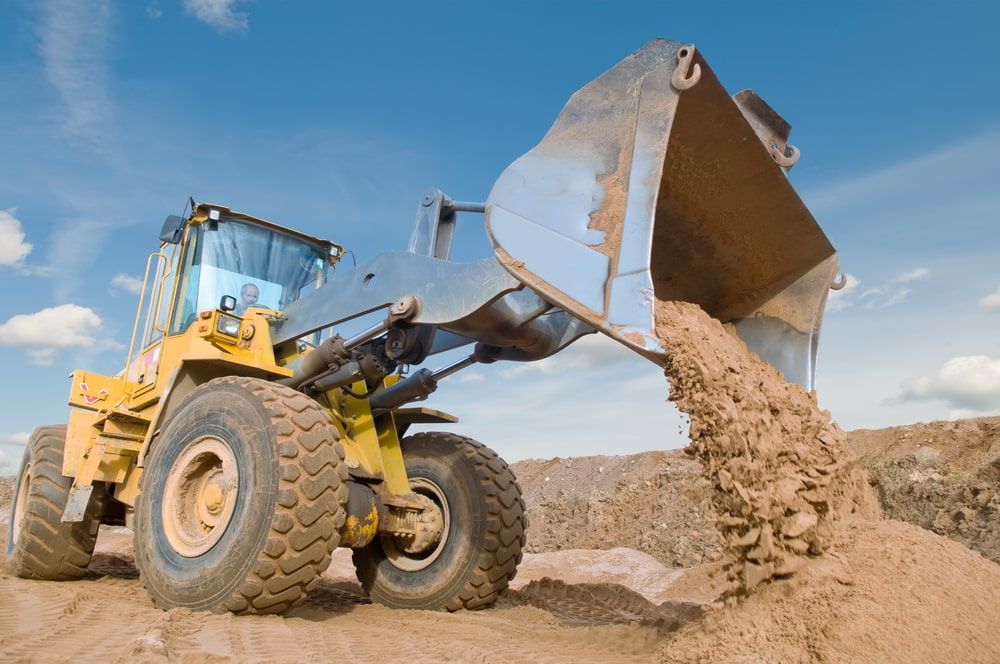Inexpensive Lancaster Excavation - Top Quality Excavation at Competitive Costs
Inexpensive Lancaster Excavation - Top Quality Excavation at Competitive Costs
Blog Article
Comprehensive Excavation Techniques: Understanding the Principles for Success
In the realm of building and civil engineering, the importance of reliable excavation methods can not be overemphasized. The mindful planning, specific implementation, and meticulous attention to information required in excavation projects demand a detailed technique that incorporates various fundamental facets. From initial soil evaluation to the execution of safety steps and routine progression surveillance, understanding these core elements is important for attaining success in any type of excavation venture. Nevertheless, the real mastery exists not simply in recognizing these principles however in flawlessly integrating them to navigate the complexities of excavation jobs with finesse.
Recognizing Excavation Job Planning

Successful excavation jobs are improved the foundation of meticulous and comprehensive planning. The initial stage of any kind of excavation job is the planning phase, where essential decisions are made that can substantially influence the result of the project. Throughout this phase, it is crucial to gather all relevant information about the website, including topographical studies, soil structure, and any kind of potential threats that may exist. Comprehending the task spending plan, timeline, and scope restrictions is essential for producing a thorough excavation plan that guarantees the task's success.
One secret aspect of excavation project preparation is the development of a comprehensive timeline that lays out the series of milestones, activities, and due dates. By very carefully taking into consideration all these factors during the preparation phase, excavation tasks can be carried out effectively and effectively, leading to effective outcomes - lancaster excavation.
Dirt Analysis and Site Examination
Performing thorough dirt analysis and site evaluation is a vital action in the preparation stage of any type of excavation task. Soil analysis involves figuring out the composition, framework, and buildings of the soil at the excavation website. This details is crucial for understanding the dirt's bearing capability, dampness material, and potential for disintegration, which are essential consider figuring out the excavation techniques and tools required for the project.
Site examination goes past dirt analysis and includes a more comprehensive analysis of the overall website conditions. This examination consists of recognizing any prospective risks, such as below ground utilities, ecological problems, or unstable terrain, that could affect the excavation procedure. By thoroughly reviewing the site, project managers can develop efficient excavation techniques that prioritize safety, efficiency, and environmental protection.
Utilizing innovative modern technologies like ground-penetrating radar, dirt tasting, and drone studies can boost the precision and effectiveness of dirt evaluation and site examination. Investing time and sources in these initial steps can ultimately conserve time and protect against expensive hold-ups or problems during the excavation procedure.
Tools Option and Usage
Effective excavation projects count heavily on calculated tools choice and use to make certain optimal performance and performance. Picking the best equipment for the task is essential in making best use of performance and minimizing downtime. Elements such as the sort of soil, depth of excavation, and job scope play a significant function in determining the most ideal tools for the job available.

Along with selecting the suitable devices, proper usage is crucial to job success. Operators needs to be trained to deal with the devices safely and efficiently - lancaster trenching. Routine maintenance checks and timely repair services assist stop malfunctions and make certain consistent performance throughout the project
Precaution and Laws Conformity
In the world of excavation projects, prioritizing security steps and compliance with policies is extremely important to making certain a lawfully sound and secure operational atmosphere. Safety and security procedures include a range of practices, consisting of carrying out complete website evaluations, implementing correct signage and barriers, and giving appropriate security training for all personnel associated with the excavation procedure. Adherence to policies, such as OSHA needs in the United States, makes certain that the excavation task meets the needed criteria to secure employees, bystanders, and the surrounding setting.

Tracking Progress and Adjusting Techniques
Exactly how can predict managers successfully track the advancement this content of excavation jobs and adjust their techniques as necessary to optimize results? Monitoring progression is important for making sure that excavation projects stay on track and fulfill deadlines.

Verdict
In verdict, understanding the basics of extensive excavation strategies is essential for the success of any kind of task. By comprehending project preparation, examining soil and site conditions, selecting ideal devices, following safety and security guidelines, and keeping track of progress, job managers can make certain a smooth and effective excavation procedure. Executing these approaches will lead to effective outcomes and lessen prospective risks or obstacles during the excavation job.
The first phase of any kind of excavation project is the planning phase, where crucial choices are made that can significantly affect the end result of the job. Recognizing the project spending plan, range, and timeline restraints is essential for producing a thorough excavation plan that guarantees the job's success.
Just how can predict managers efficiently track the innovation of excavation tasks and adapt their strategies appropriately to enhance end results? By closely keeping track of development and being ready to adjust approaches, project managers can enhance the overall success of excavation projects.
By understanding project planning, evaluating dirt and website problems, picking appropriate equipment, complying with security policies, and keeping track of development, project managers can ensure a smooth and efficient excavation procedure.
Report this page